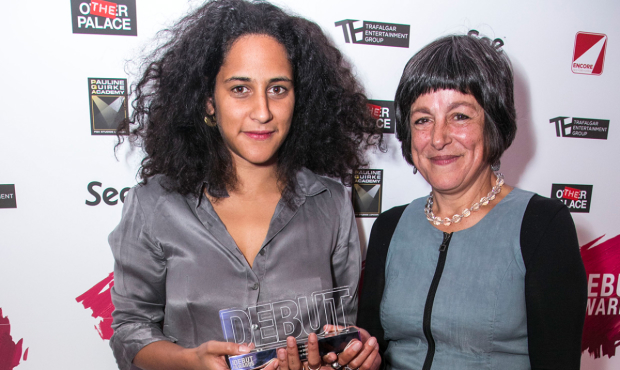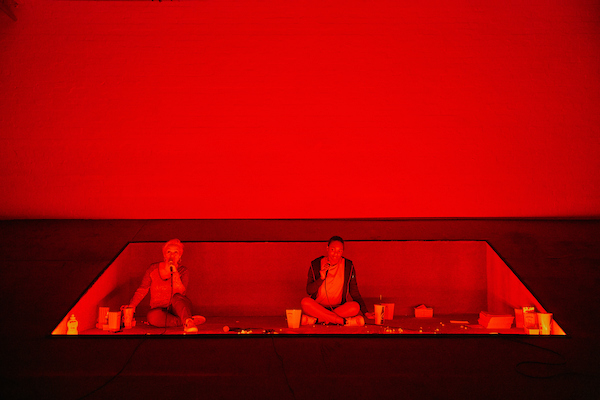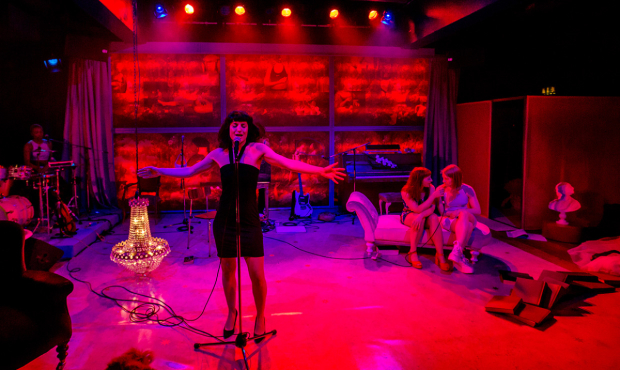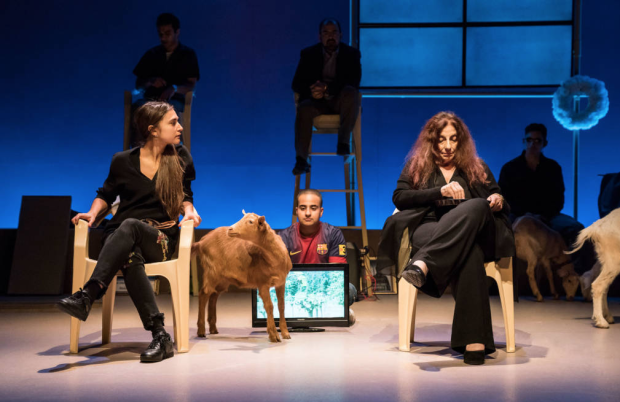And introducing… Rosie Elnile: Black boxes be damned, here's a designer embracing excess
In the second of his new series shining a light on emerging theatremakers, Matt Trueman meets a designer with a passion for extravagance, unruliness, mess and fun

© Dan Wooller for WhatsOnStage
Something fascinating is happening in theatre design: the beginnings of a battle. On main stages, minimalism reigns supreme. Sets are stripped back and spare; space given to actors. A few objects do a lot of work: nine pianos in Summer and Smoke, microphones in Mood Music. Bareness can be bold. It leaves nowhere to hide.
But elsewhere, a new generation of designers is embracing excess. Their stages zing with colour: electric blues, scorched pinks and neon yellows. Their costumes make statements. Their lights fire like lasers. Buggy Baby was all balloons, chaos and strobes. Trust swamped the Gate's small stage with stuff. It's political: instead of austerity, extravagance, unruliness, mess. It's the aesthetics of online – youthful, cacophonous and, most importantly, fun.
Colour is Rosie Elnile's weapon of choice. Black boxes be damned
Thrillingly, a host of young (female) designers is leading the charge: Bethany Wells, Camilla Clarke and, most concertedly, Rosie Elnile. The 27 year-old painted the Royal Court hot pink for Liwaa Yazji's Goats, a satire on Syria's brutal civil war. She's turned the Gate Theatre bright blue (The Unknown Island) and the Finborough saffron (Returning to Haifa). Colour is her weapon of choice. Black boxes be damned.
Elnile's stages often feel joyful. In person, she's effusive and engaged: passionate about the possibilities of theatre design. "I'm excited by the idea of maximalism," she says over coffee in Brixton. "I love the idea of not holding back" – not to bombard or overwhelm audiences, but to usher us out of a grey everyday into an alternative, unashamedly artistic space. It's performance as pleasure: "What's pleasurable for a performer, for an audience; what's pleasurable to make. It's quite unprotestant."

© Mark Douet
As such, her designs tend to be disruptive. Elnile makes spaces not just stages, rearranging rooms to wrap audiences up in design. It's almost immersive. She swamps us in colour and confronts us with shapes. For Big Guns at the Yard, she sat us in front of a steep slope soaked in raw orange light – a big, bold gesture on a tight, fringe budget. Elnile overhauls auditoriums.
Traditional theatres bother her a bit
Traditional theatres bother her a bit. "Everything you do is framed by an old aesthetic – Victorian or '60s brutalism – but very middle class, often very male." She talks of "invading" and "breaking" such spaces. "I'm looking for a new aesthetic: things that are connected to a different experience of the world."
Her artistic background's unusual. Having grown up in Gloucestershire, she came to theatre late, via an art foundation course where she discovered early performance art – Merce Cunningham, John Cage, "quite cheesy stuff now". It led her to study collaborative theatre at Central, gravitating towards design. Inspired by companies like Forced Entertainment and Gob Squad – ensembles without designers, but with distinctive aesthetics – she worked in live art before a year at the Donmar. She brings a fresh sensibility to theatre.

© Richard Davenport
That defines her designs: a drive to escape mainstream tastes, to alter the way audiences see the world. "It's about looking outside of the canon of white male images," she says. Her sketchbooks are filled with tumbling collages: ideas overlapping, images colliding. "It's a way of organising things in a slightly different way," she explains – not neatly, but jumbled up; associative, not ordered.
In her latest show, RashDash's feminist take on Three Sisters, a chandelier has crashed to the floor, a white bust of Chekhov spins silently on a plinth and the sisters themselves look like the Spice Girls. It's playful and provocative; forthright but delightful. Coming up, Elnile's keen to continue her collaboration with the Gate's Ellen McDougall, and she's working on an ambitious travelling project with the Manchester Royal Exchange. One thing's for sure: Rosie Elnile is shaking things up.

© Johan Persson


















